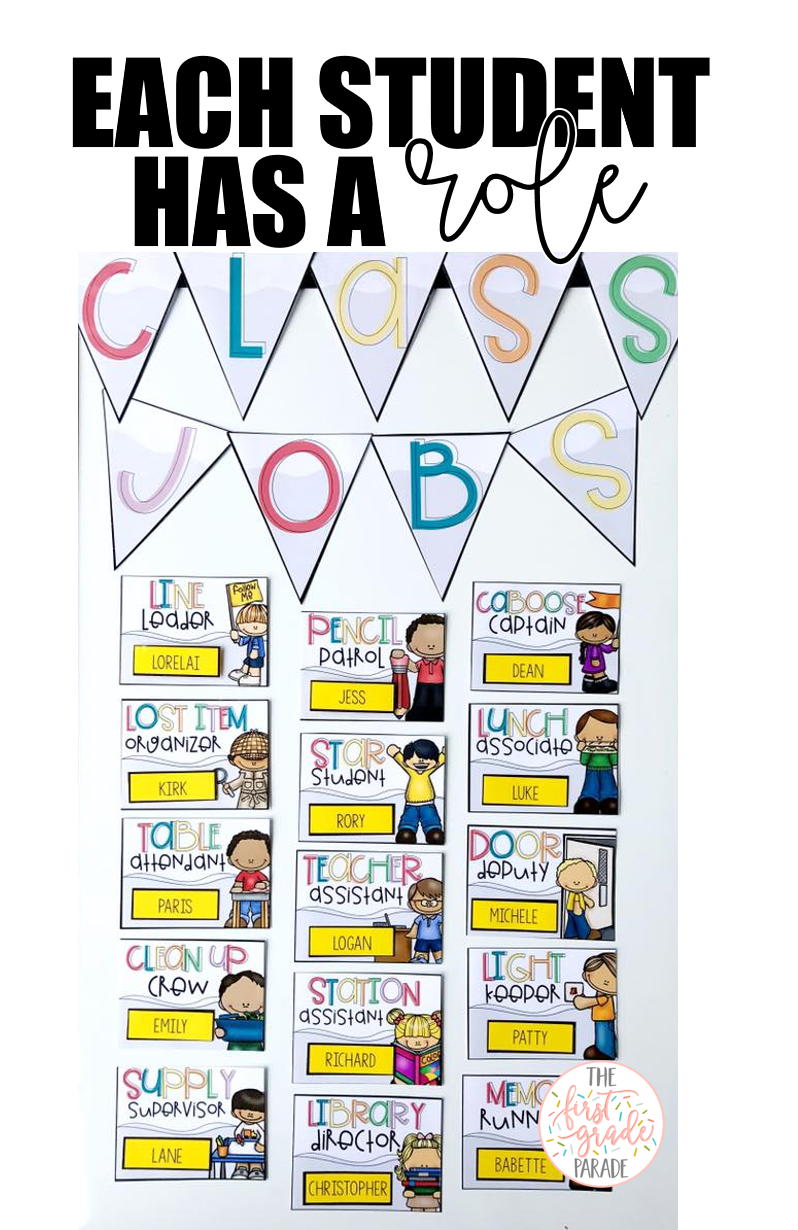
Assigning classroom jobs to students can be a great way to encourage responsibility and teach important life skills. In a first-grade classroom, implementing a system of jobs can help create a positive and organized learning environment. These jobs can range from simple tasks to more complex responsibilities, giving students a sense of ownership and pride in their contribution to the classroom community.
The Benefits of Classroom Jobs

Introducing classroom jobs in a first-grade setting has numerous benefits. Firstly, it teaches students about responsibility, as they are given specific tasks to complete regularly. This helps them develop a sense of accountability and ownership. Secondly, it fosters a sense of community within the classroom, as students work together to maintain the classroom environment. Finally, it provides an opportunity for students to develop essential life skills such as organization, time management, and teamwork.
Types of Classroom Jobs

There are various types of jobs that can be assigned to first-grade students. Some common examples include:
- Line Leader: The line leader leads the class when transitioning between locations within the school.
- Door Holder: Responsible for holding the door open for classmates during transitions.
- Paper Collector: Collects and organizes papers handed out by the teacher.
- Librarian: Helps maintain the classroom library by organizing books and returning them to their designated spots.
- Classroom Cleaner: Assists in keeping the classroom tidy by organizing supplies and cleaning up after activities.
These are just a few examples, and the specific jobs can be tailored to suit the needs and dynamics of each individual classroom.
Implementing a Classroom Jobs System
When implementing a classroom jobs system in a first-grade classroom, it is important to consider the following:
- Job Descriptions: Clearly define the responsibilities and expectations for each job. This helps students understand their roles and perform their tasks effectively.
- Rotation Schedule: Create a schedule that allows each student to have a turn at each job. This promotes fairness and equal opportunities for all students.
- Training and Support: Provide proper training and support to students when they first take on a job. This ensures they understand how to fulfill their responsibilities successfully.
- Recognition and Rewards: Celebrate students' efforts and achievements in their jobs. This can be done through verbal praise, certificates, or small rewards to motivate and encourage their participation.
Conclusion
Incorporating classroom jobs into a first-grade classroom can have numerous benefits for both students and teachers. It encourages responsibility, fosters a sense of community, and develops essential life skills. By implementing a well-structured system and providing appropriate support, teachers can create an engaging and organized learning environment that empowers students to take ownership of their classroom responsibilities.